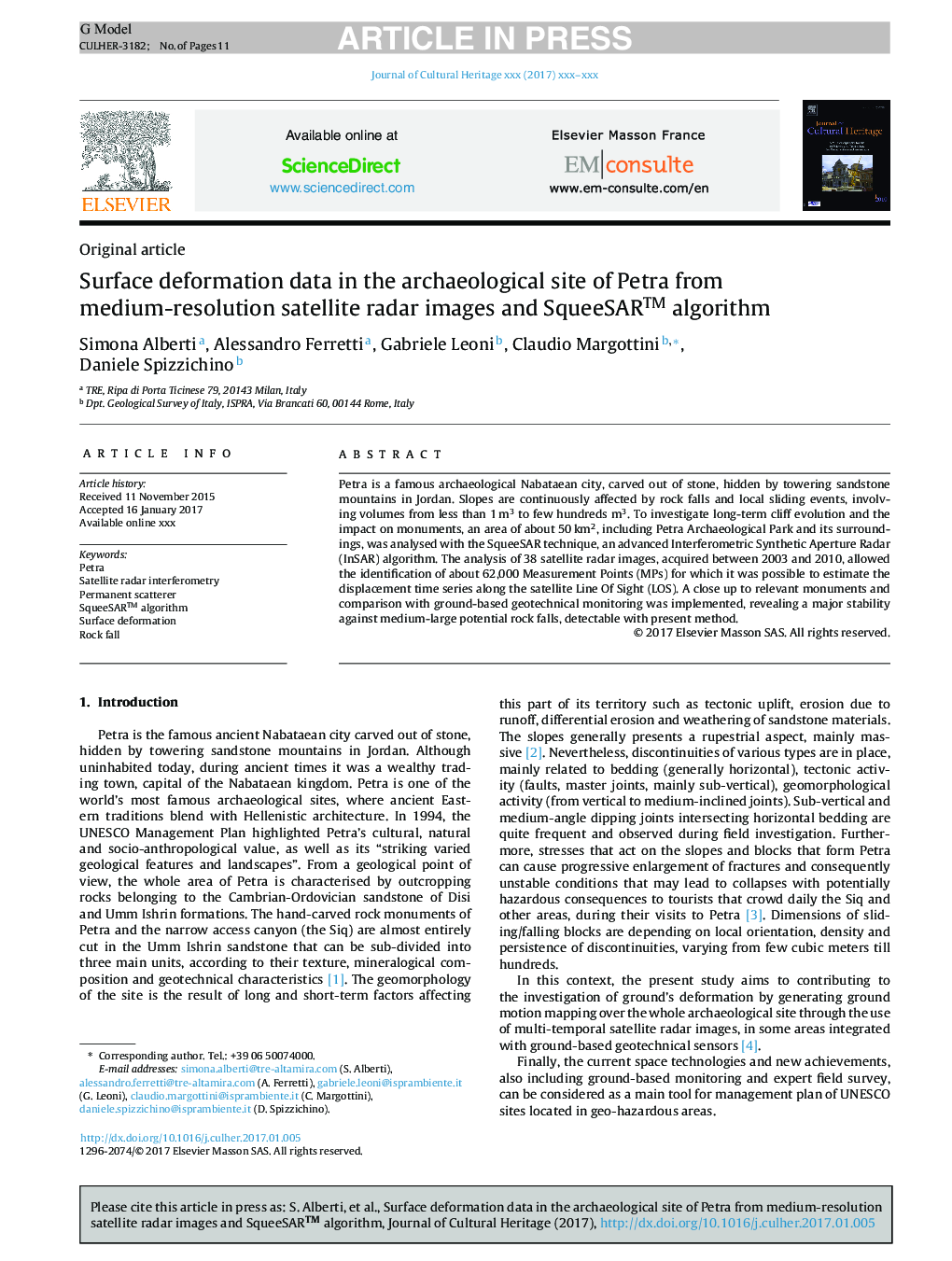| Article ID | Journal | Published Year | Pages | File Type |
|---|---|---|---|---|
| 5112638 | Journal of Cultural Heritage | 2017 | 11 Pages |
Abstract
Petra is a famous archaeological Nabataean city, carved out of stone, hidden by towering sandstone mountains in Jordan. Slopes are continuously affected by rock falls and local sliding events, involving volumes from less than 1Â m3 to few hundreds m3. To investigate long-term cliff evolution and the impact on monuments, an area of about 50Â km2, including Petra Archaeological Park and its surroundings, was analysed with the SqueeSAR technique, an advanced Interferometric Synthetic Aperture Radar (InSAR) algorithm. The analysis of 38 satellite radar images, acquired between 2003 and 2010, allowed the identification of about 62,000 Measurement Points (MPs) for which it was possible to estimate the displacement time series along the satellite Line Of Sight (LOS). A close up to relevant monuments and comparison with ground-based geotechnical monitoring was implemented, revealing a major stability against medium-large potential rock falls, detectable with present method.
Related Topics
Physical Sciences and Engineering
Chemistry
Physical and Theoretical Chemistry
Authors
Simona Alberti, Alessandro Ferretti, Gabriele Leoni, Claudio Margottini, Daniele Spizzichino,
